Unistellar eVscope 2 digital telescope review
The Unistellar eVscope 2 digital telescope has a new eyepiece, a wider field of view and puts higher-res views of galaxies, nebulae and stars clusters on your phone or tablet. Here's our review

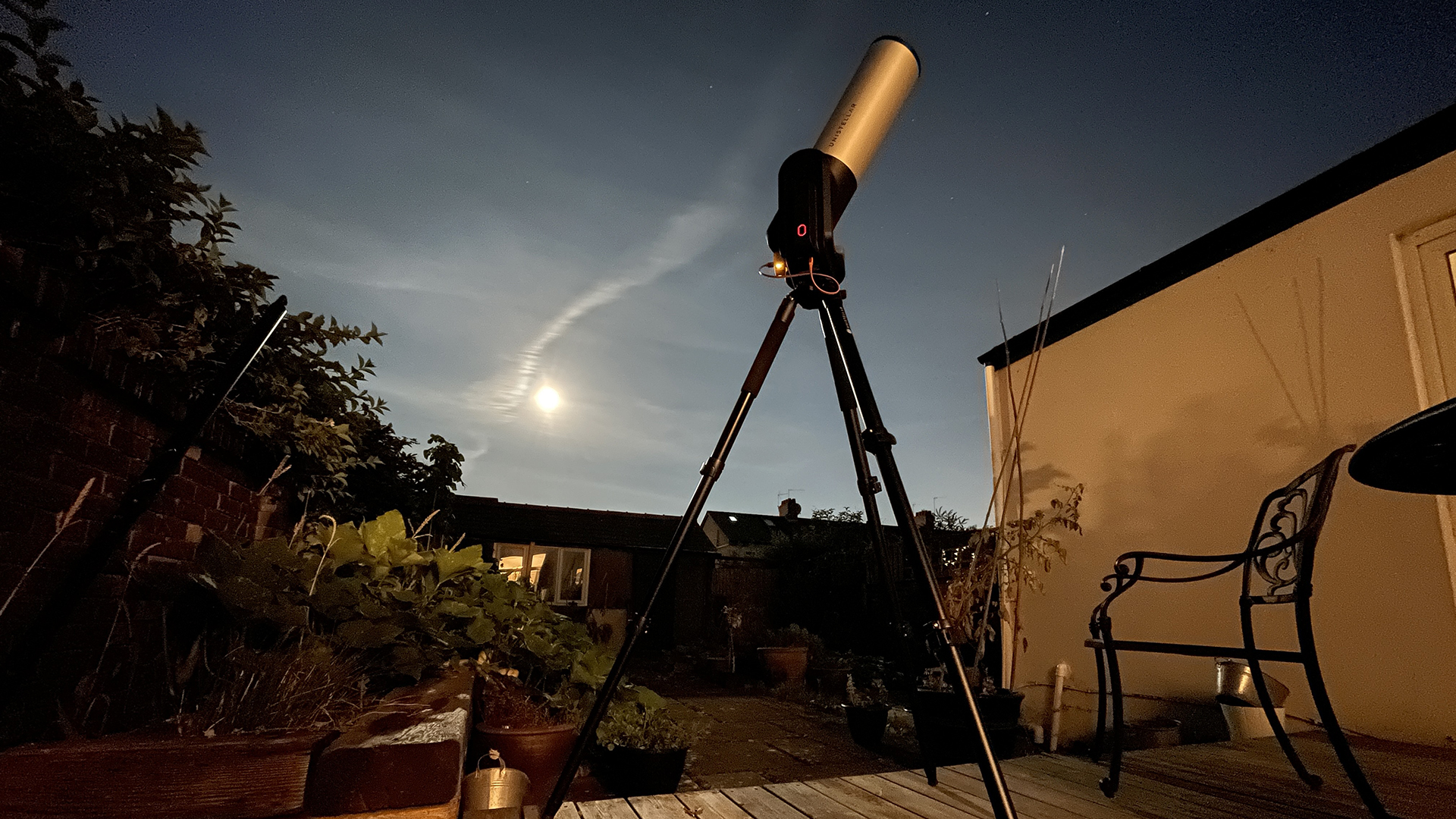
With a new, clearer Nikon eyepiece and a wider field of view, the Unistellar eVscope 2 smart 'scope can now be used to take sharper astro-photos of the Moon as well as distant galaxies, nebulae and stars clusters. However, its biggest attraction is that it deals expertly with light pollution.
-
+
Works great in light-polluted areas
-
+
Full-screen views of the Moon
-
+
Sends 7.7 MP images to phones and tablets
-
+
Comes with a useful backpack
-
+
Very simple to set up
-
+
Easy to share in groups of up to 10 people
-
-
Slewing to objects can be slow
-
-
Focusing is manual
-
-
Planets don't look good
-
-
Slight drop in battery life
-
-
Very high price
Why you can trust T3

The Unistellar eVscope 2 is a digital telescope from the Maseille-based company. What exactly is a digital telescope? It's a regular telescope that's fully motorised and controlled exclusively via an app on a smartphone or tablet. However, as well as getting telescopes to slew to various deep sky targets just at the touch of a button, a digital telescope is fitted with a camera sensor, so in that way it's as much about astrophotography as amateur astronomy.
Having created the first digital telescopes that use a camera sensor to deliver deep sky images to an app on a smartphone, Unistellar abandoned the idea of physically looking through a telescope with the launch of its eVscope eQuinox telescope in March 2021. However, not only does the eVscope 2, which launched in autumn 2021, see the return of an eyepiece, but it's made by no less a company than Nikon.
It's one of a trio of improvements. With a new wider field of view and a higher resolution Sony sensor inside, the eVscope 2 is surely the most refined digital telescope yet. It's one of the best telescopes we've tried, and because it's so incredibly easy to use, it's also one of the best beginner telescopes (albeit one of the most expensive). Read on for our full Unistellar eVscope 2 digital telescope review.
- Buy the eVscope telescope at Unistellar
- How to choose your first telescope
- Discover the different types of telescope, from refractor to Dobsonian
Unistellar eVscope 2 telescope review: first impressions
The eVscope seems, at first, to be identical to its predecessor. It has the same light grey tube and comes propped-up on a large tripod with three-section legs. Each is held steady by large, solid cams.
However, there are several changes. The new Nikon Electronic Eyepiece is very impressive. Branded with the camera-maker's logo, it's a lot clearer, more detailed, and much more involving than the eyepiece used on the original eVscope. Stars, nebulae and galaxies are presented against the jet black of space, and there's plenty of eye relief, which is good if you wear glasses. You can focus the eyepiece separately using a small knob.
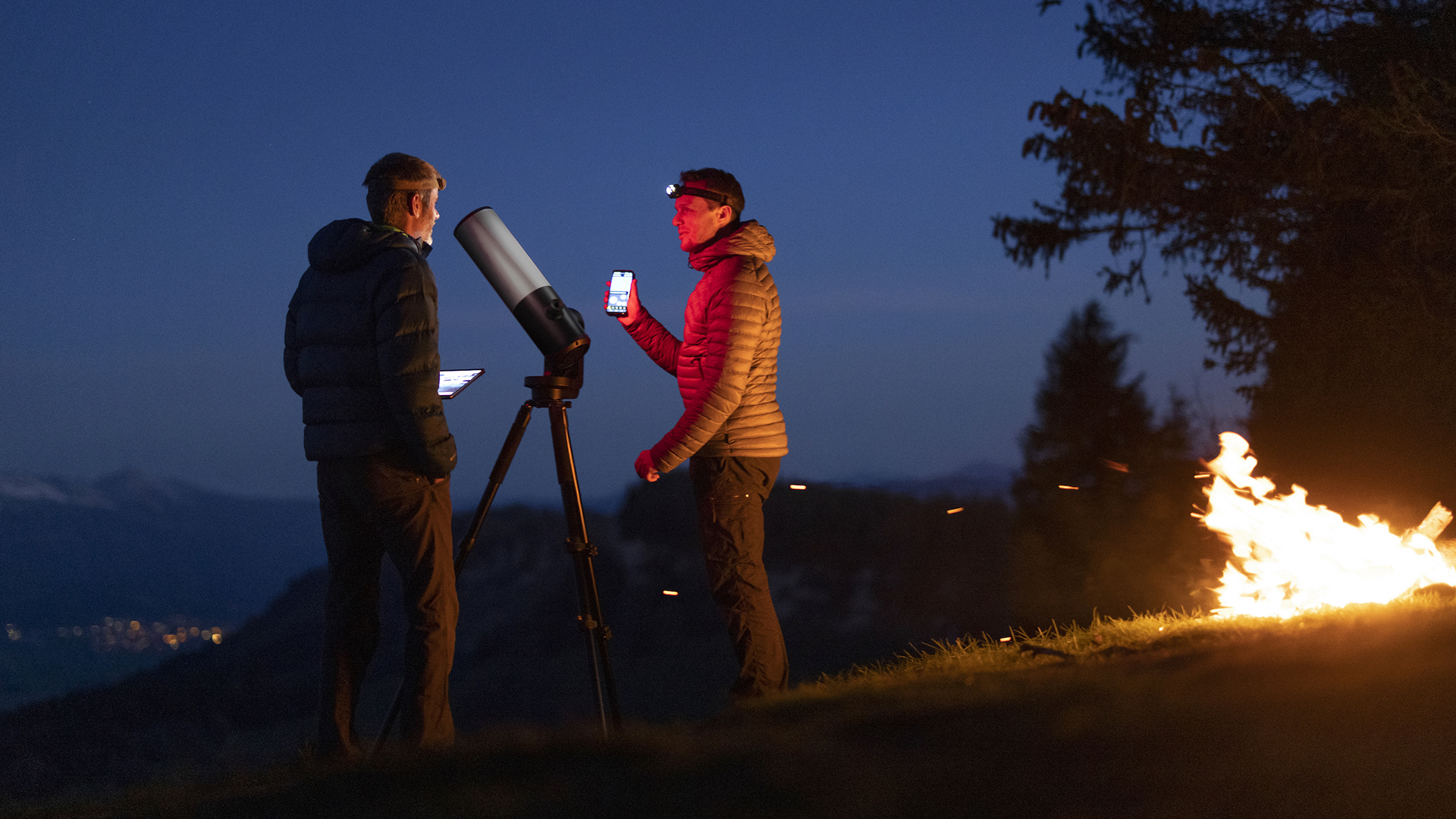
That eyepiece has a lot to work with. Inside the eVscope 2 is an all-new Sony IMX347 CMOS image sensor, which is capable of 3200x3200 pixel images. That's 7.7 megapixels, which is something of a leap from the 4.8 megapixel images offered by the original eVscope and the eVscope eQuinox. Crucially, the eVscope 2 also has a new, wider field of view, so as well as getting views of distant galaxies and nebulae you can also now get a full screen view of the Moon and the stunning Andromeda Galaxy. However, planets don't look good … aside from Jupiter.
Unistellar eVscope 2 smart telescope review: price and release date
Available to buy now, following its launch in autumn 2021, the eVscope 2 costs €3,799 / £3,399 / $4,199, which is rather pricier than the debut product, the eVscope, which cost €2,999 / £2,599 / $2,999. Unistellar seems (wisely) to have scrapped its shipping charge, so there's free delivery in all major territories. There's a large tripod and a large, custom-made (and very comfortable) backpack included in the box.
Get all the latest news, reviews, deals and buying guides on gorgeous tech, home and active products from the T3 experts

Unistellar eVscope 2 review: design and setup
The eVscope is so easy to set up. Once it's mounted on its tripod (complete with spirit level to get it flat) using two thumbscrews, you download the app, switch-on the telescope, tune-in to its WiFi Direct network, remove the lens cap and eyepiece cover, and press a button on the app to have indulge in 'Autonomous Field Detection'. All that means is that it cross-references what stars it sees with some built-in planetarium software, as well as using your phone's GPS to work out where it is and what it should be seeing. It works more quickly if you use the arrow keys on the app to gently point it south/south-east where the Milky Way is … the more stars, the better! Obviously, you need a clear night.
There's a focus wheel on the underside of the eVscope. Although you can just manually focus on the Moon, it's best to use the Bahtinov mask. It's hidden in the lens cap. You put this plastic disc across the end of the telescope tube, point the eVscope at a bright star, then focus the telescope until you see three angled spikes of light. It's easy to do.

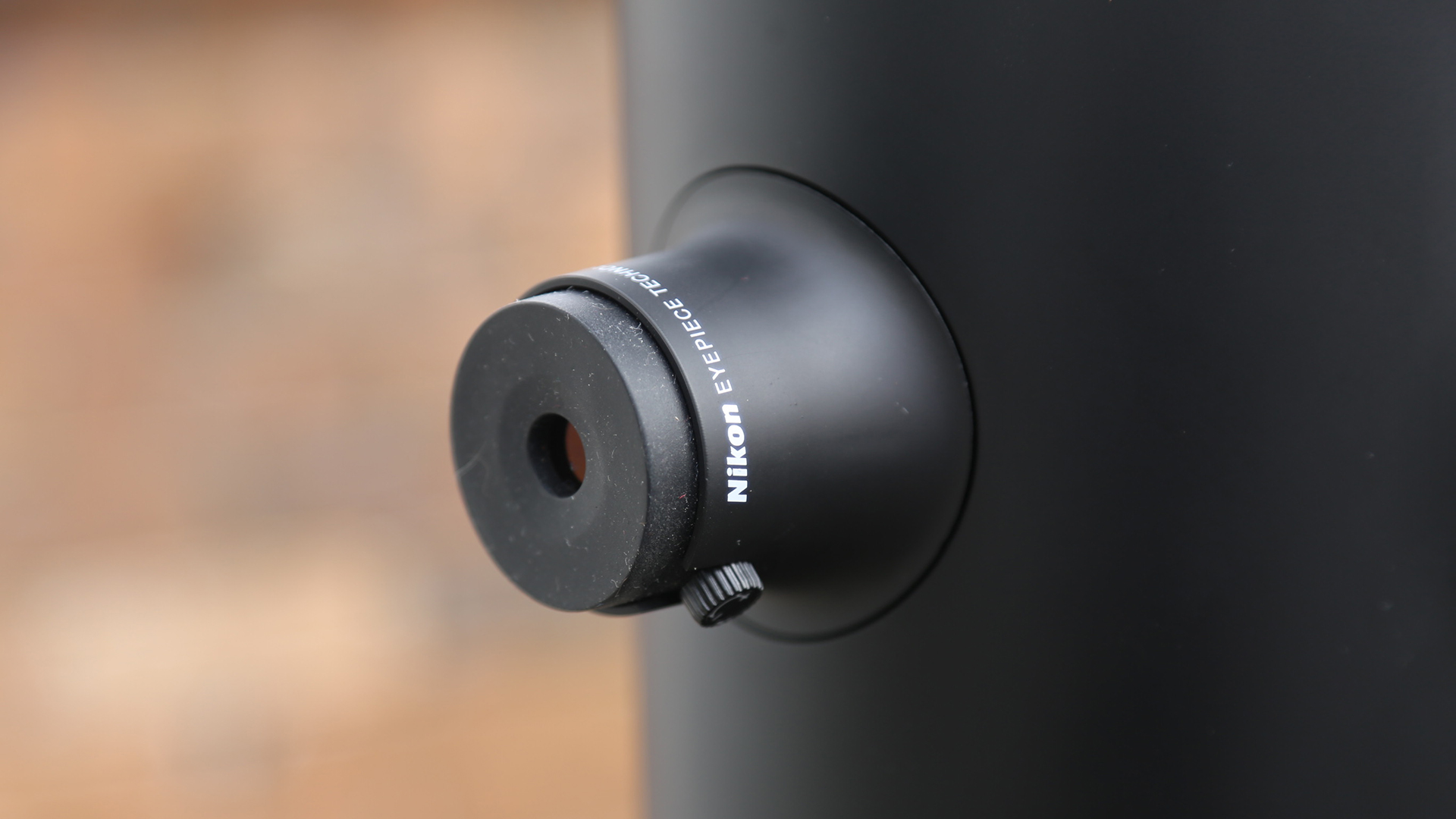

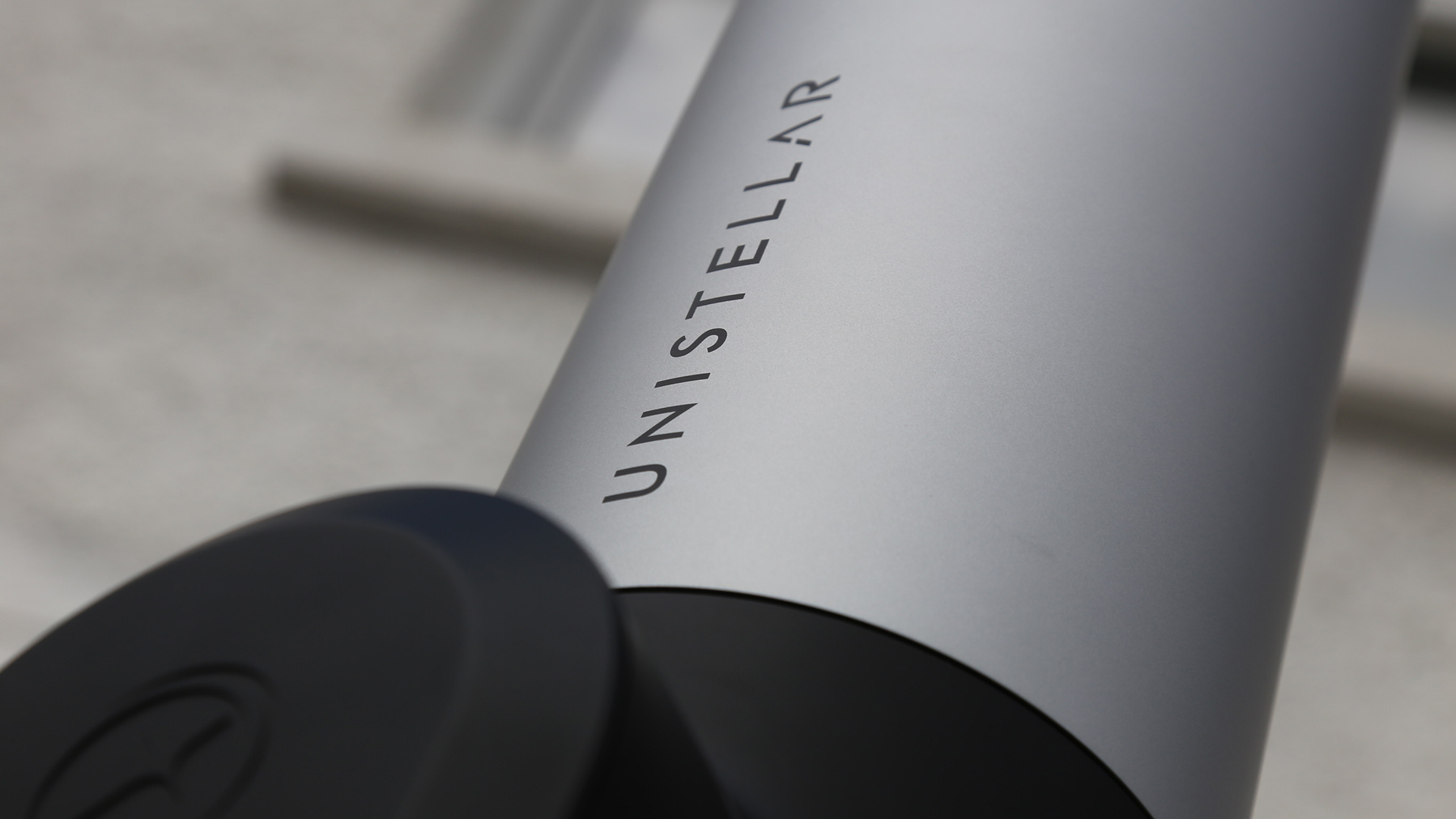
Unistellar eVscope 2 smart telescope review: features and usability
Once you're set up the app presents to you the choice of objects, from galaxies and nebulae to stars and the Moon, that are currently high above the horizon and ideal for observing. The app has a built-in catalogue of about 5400 objects to choose from.
The magic happens when you slew an object, which can take a while, though the eVscope is so accurate that we have no complaints. Once it has the object in its crosshairs you simply press the 'Enhanced Vision' button – a graphic of an eye – and it begins to take photos and stack them on top of each other. This is an advanced technique of astrophotographers and it helps produce incredible images even under light-polluted skies.
You can watch either through the eyepiece (though don't touch the telescope) or at your phone or a tablet as the object in question gets brighter and more defined with time. Some faint nebulae are worth observing for a long time, others look great after just a few seconds. Either way, you can download them to devices and share them instantly.
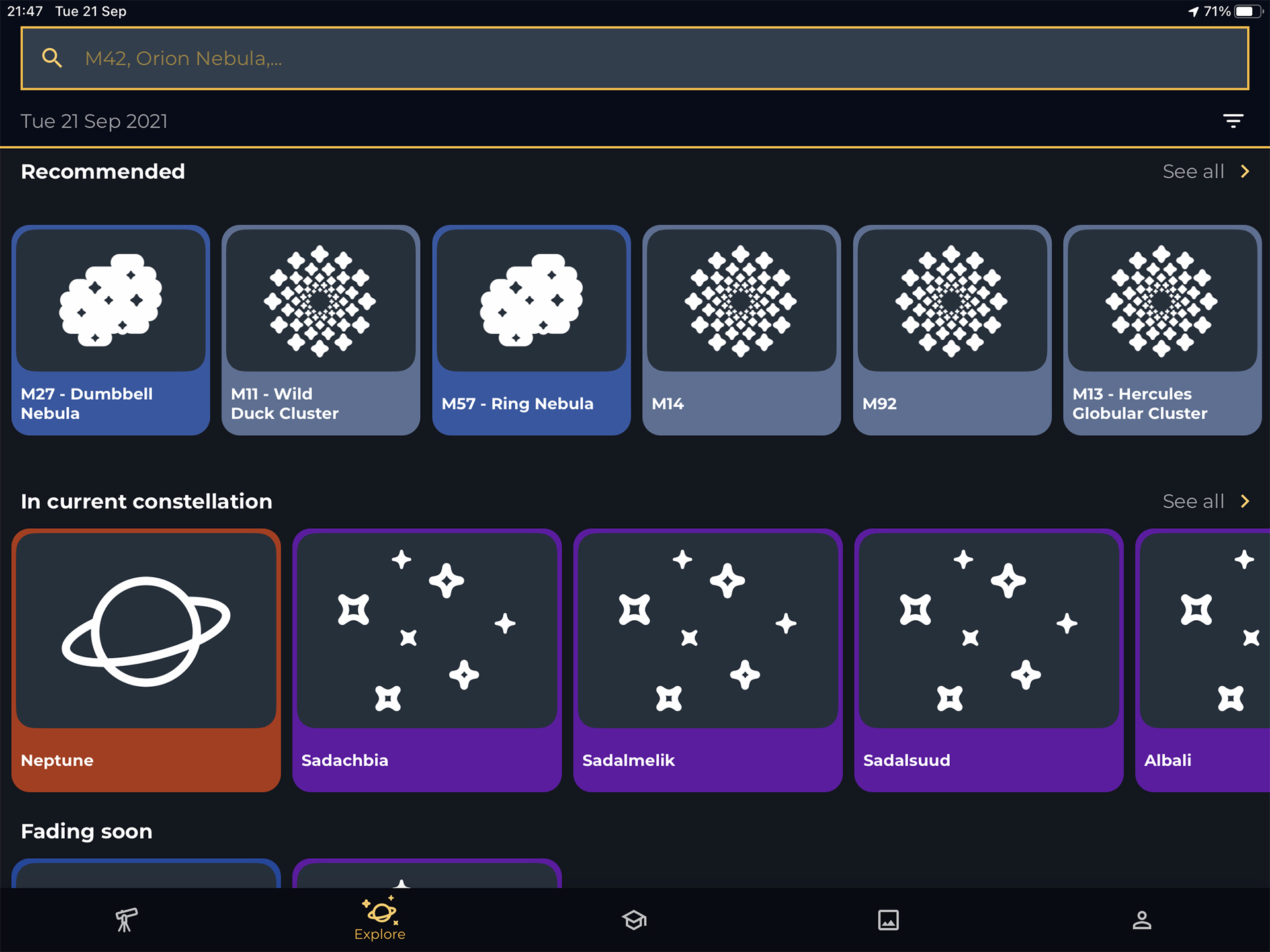

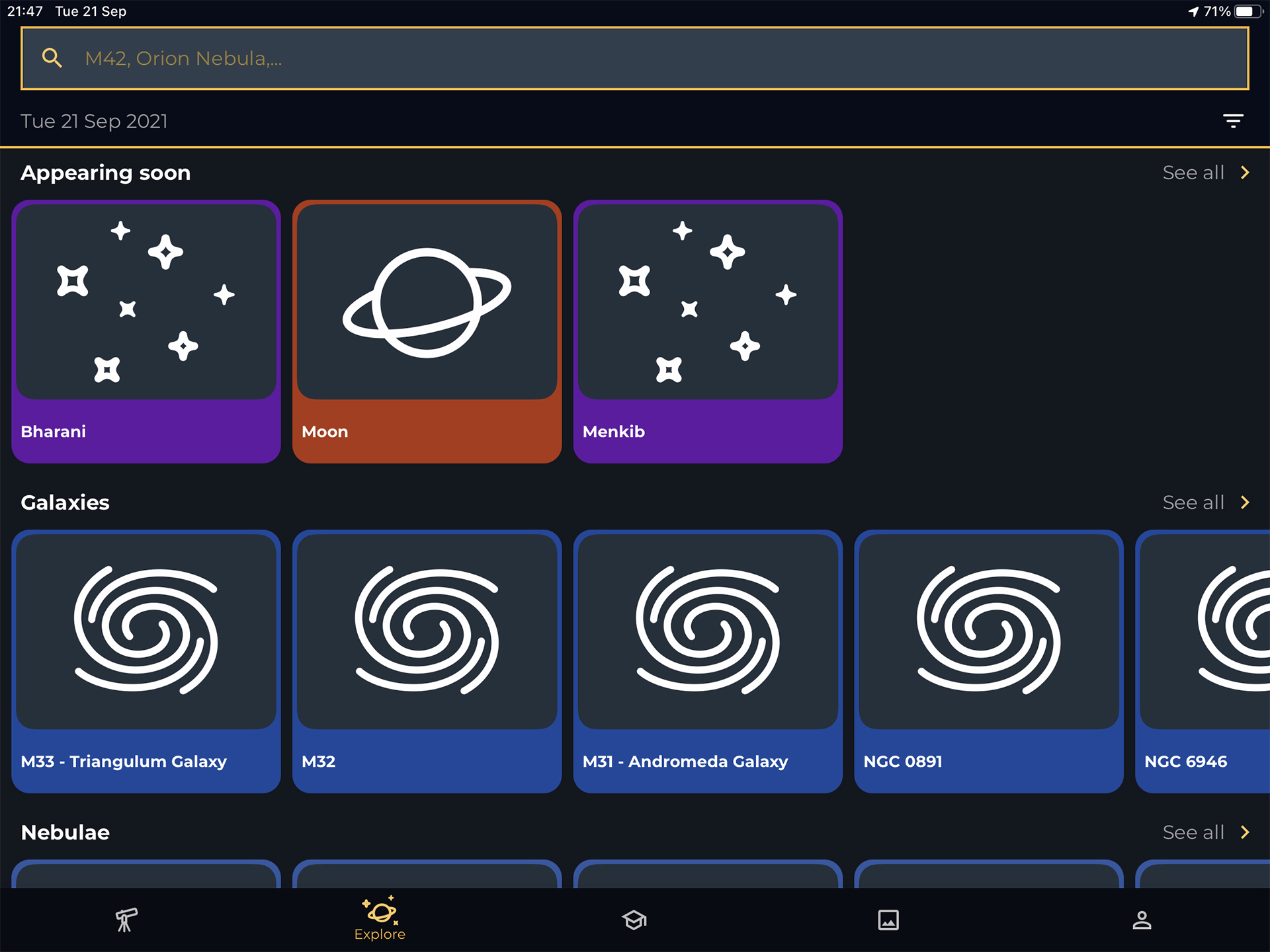


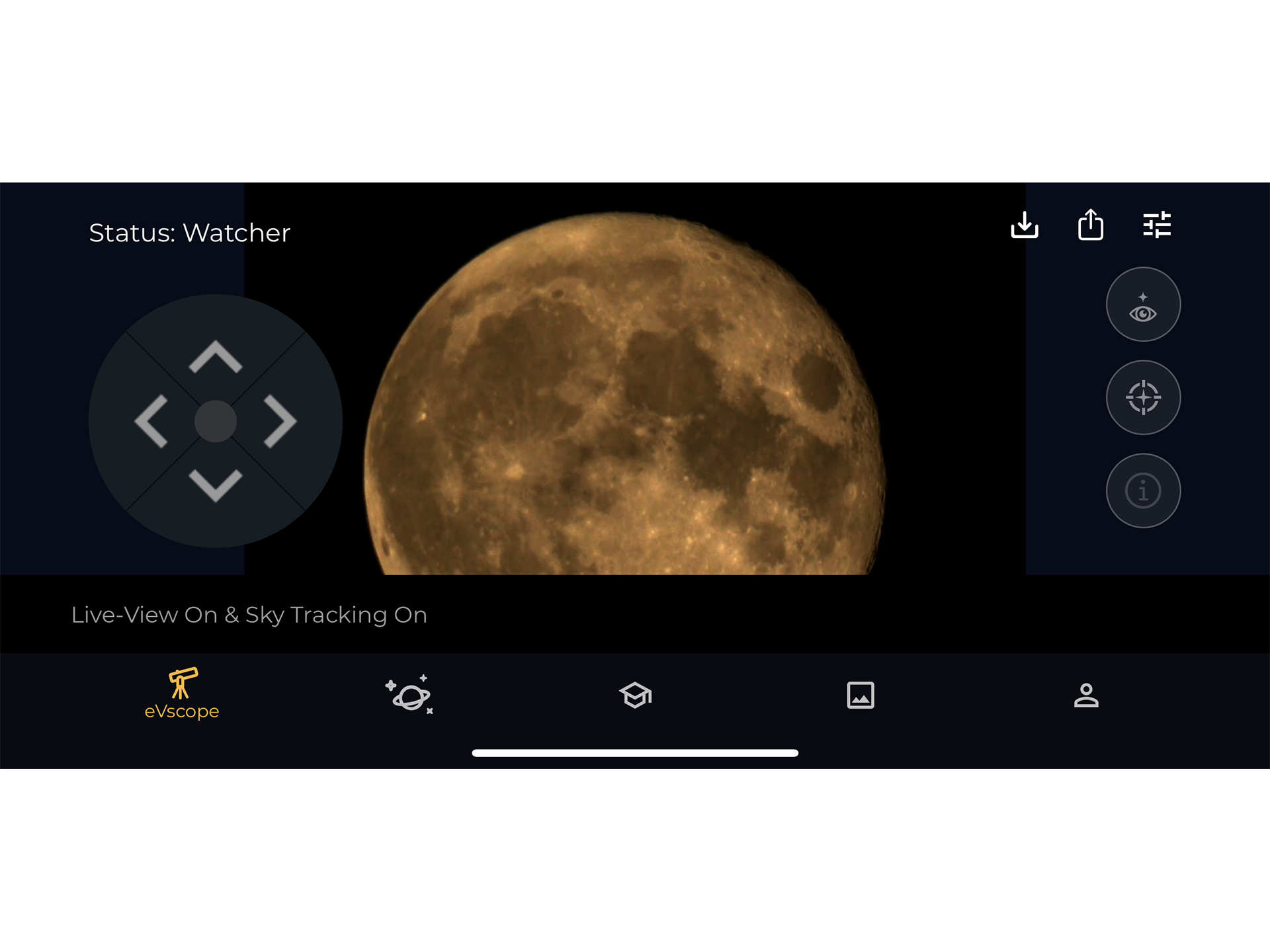
Unistellar eVscope 2 smart telescope review: images
Yes, the eVscope is higher resolution than its forbear, but in part those extra pixels help to make up for its slightly wider field of view. So while the 7.7 megapixels are very welcome, you're not going to be wowed by ultra HD views.
What is new to the eVscope 2 is more contrasty images with deeper blacks and richer star fields. We're talking here about better images – delivered as good quality PNG files – that are great for viewing on phones and tablets, and for sharing online. You can zoom in on them within the app up to 400x, but it's best not to go that far.



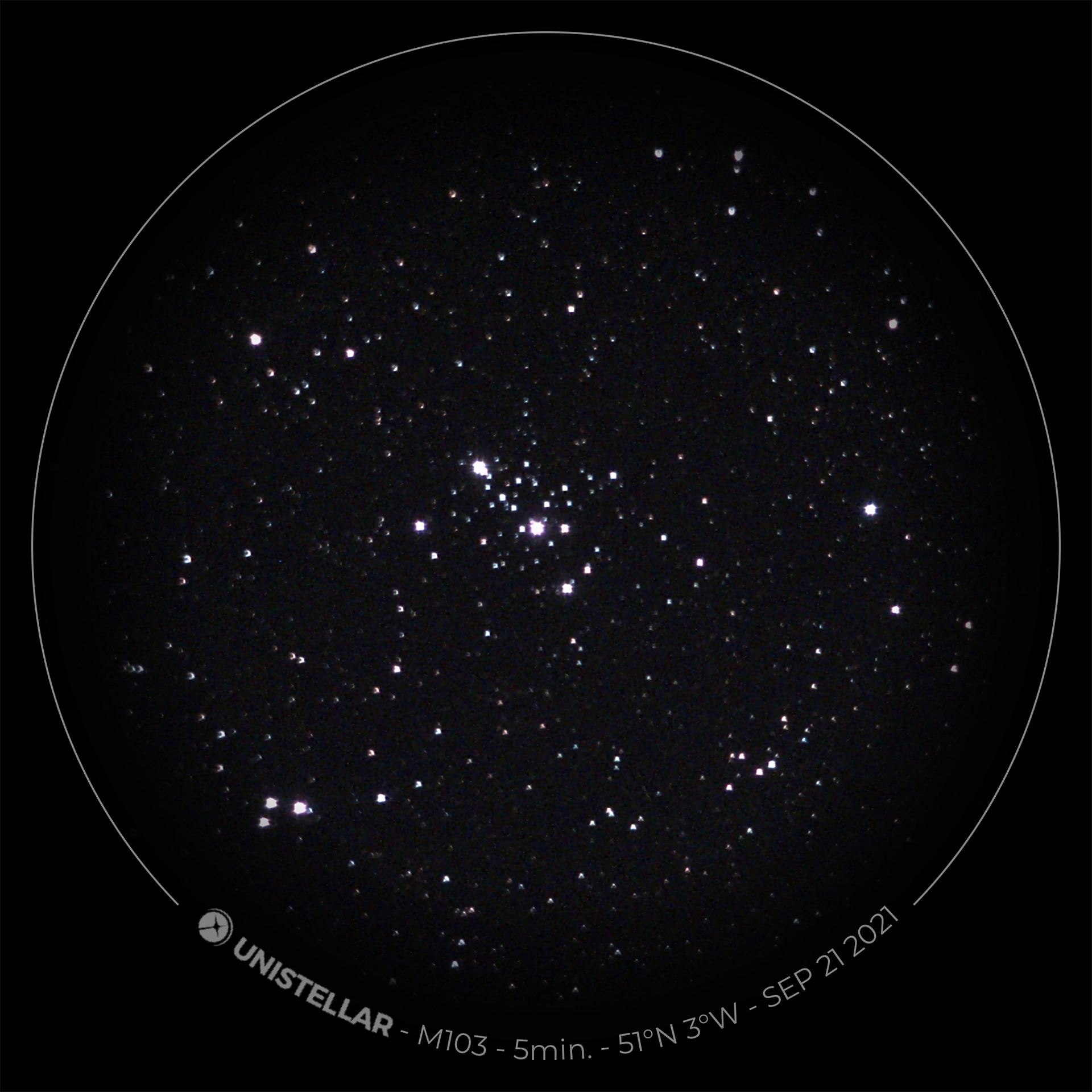
The ambient LED glow over every city on Earth is an absolute nightmare for amateur astronomers, but somehow the eVscope's filters and stacking tech helps get over it. Being able to image distant nebulae while not half a mile from a busy city centre is a thing of wonder. However, light pollution does make a difference. For example, during nights with a bright Moon it's best to point the eVscope at targets on the other side of the night sky, where it's much darker (after you're snapped the Moon, of course). It's also why the eVscope ships with that excellent backpack; so you can easily take it to truly dark rural skies. Do that and it can see objects down to a limiting magnitude of 18.
Unistellar eVscope 2 smart telescope review: specs
Optical design: Reflector
Objective lens diameter: 4.5"/114mm
Focal length: 17.7"/450mm
Focal ratio: f/4
Software supplied: Unistellar app
Optical tube length: 65cm
Mount: Motorized alt-az
Tripod: Aluminium construction, adjustable
Weight: 19.8 lbs / 9kg including tripod
Storage capacity: 64 GB
Battery life: 10 hours
Connectivity: WiFi (10 devices can connect at once)
Maximum magnitude: up to 18 in dark skies/under 16 in urban areas
Level: Beginner
Unistellar eVscope 2 smart telescope review: verdict
With a new wider field of view and a few more pixels to play with, the eVscope 2 is a a souped-up smart scope that's great for polluted skies. This hugely likeable digital telescope serves as a great introduction – albeit a hugely expensive one – to the world of amateur astronomy and astrophotography, but without any of the hassle.
First reviewed September 2021.
Jamie is a freelance journalist, copywriter and author with 20 years' experience. He's written journalism for over 50 publications and websites and, when he's not writing, spending most of his time travelling – putting the latest travel tech through its paces.
